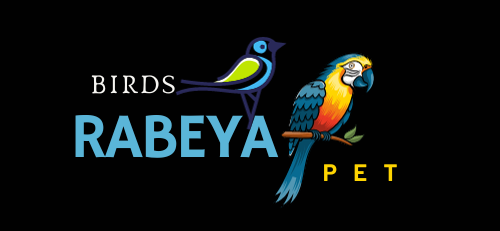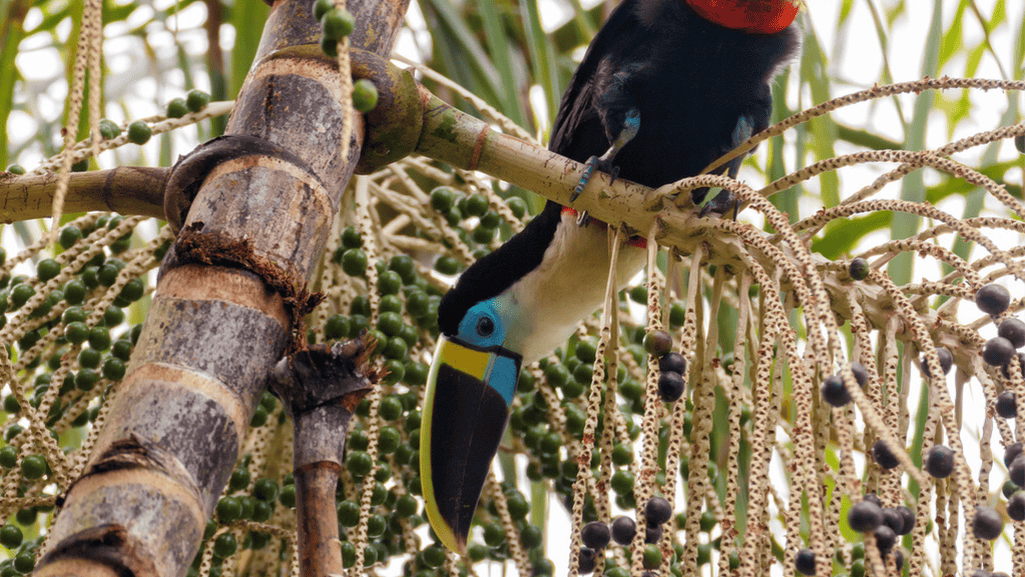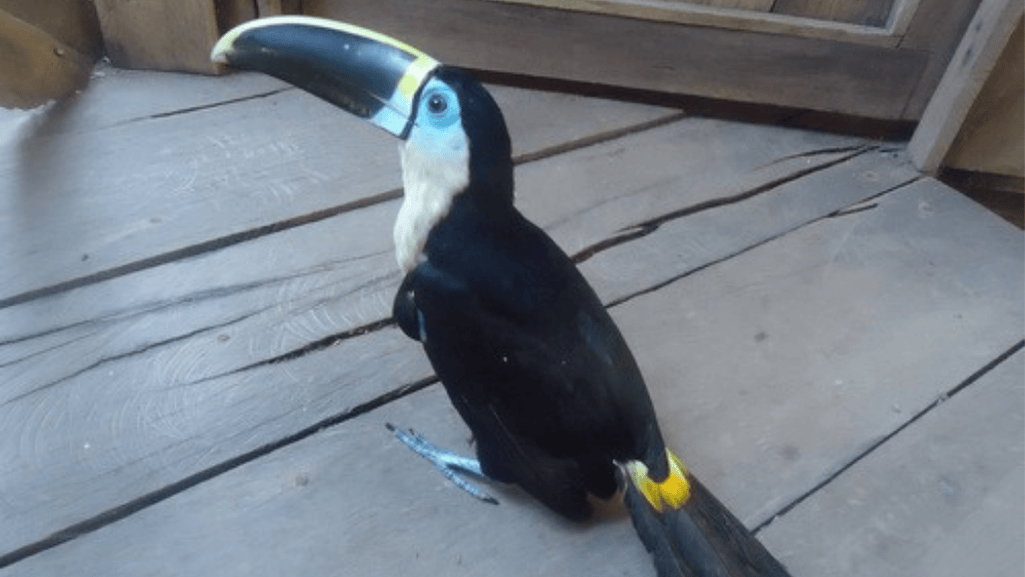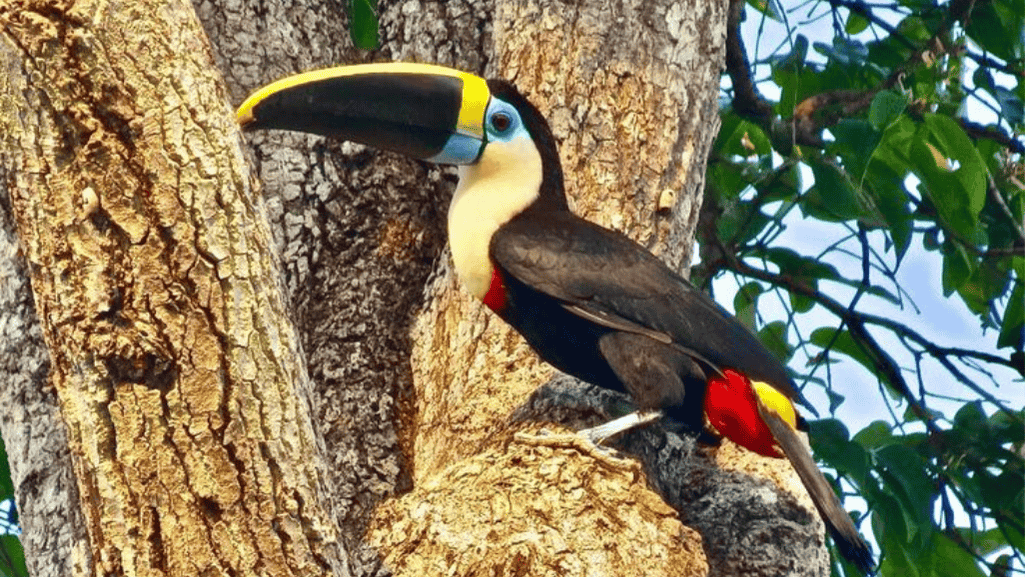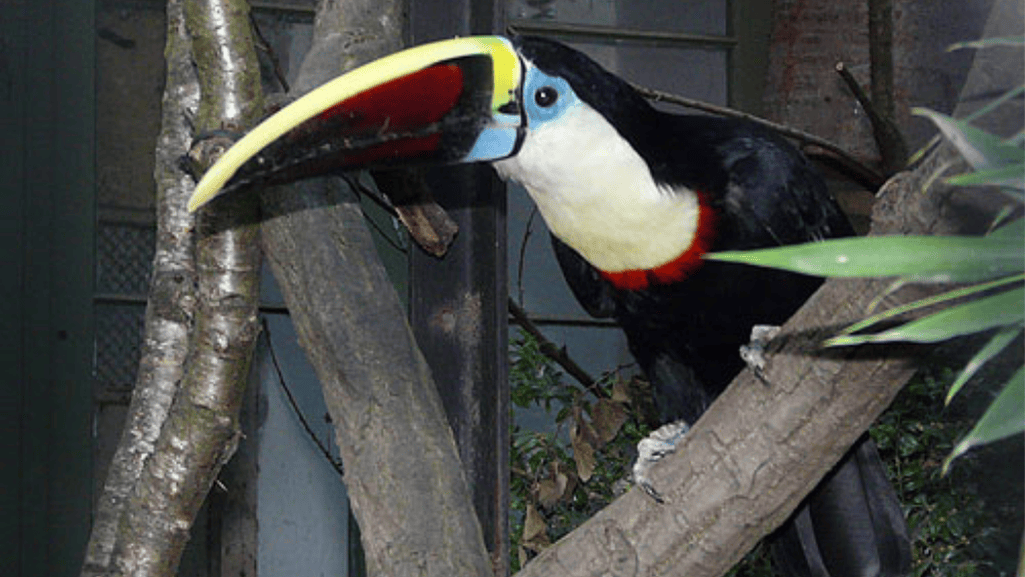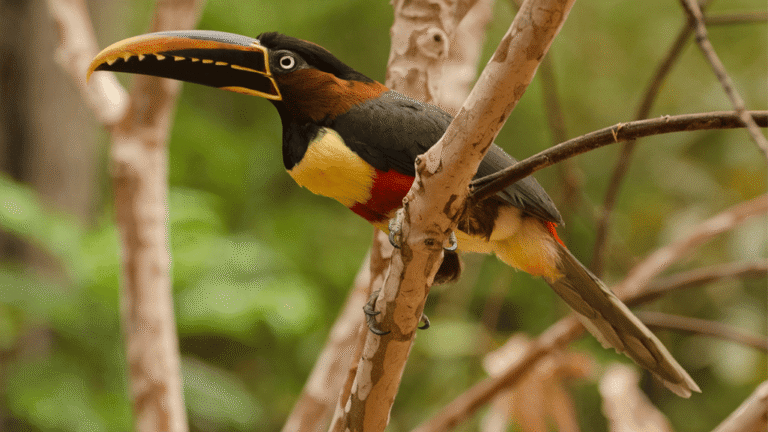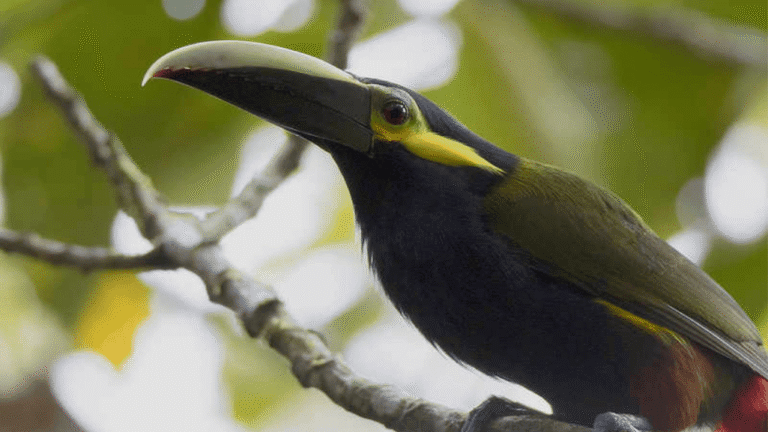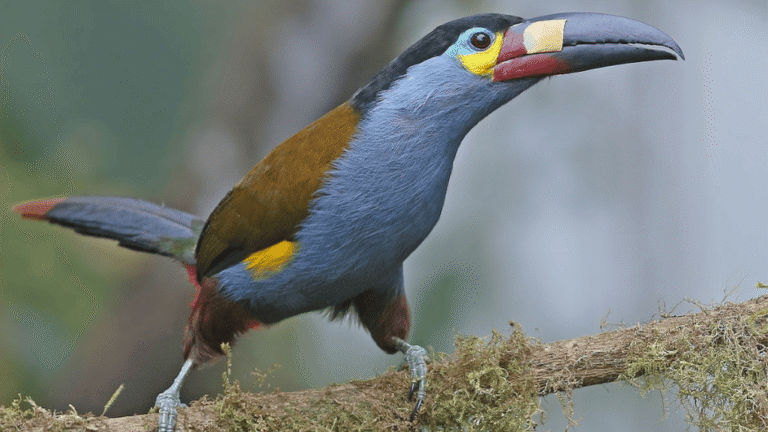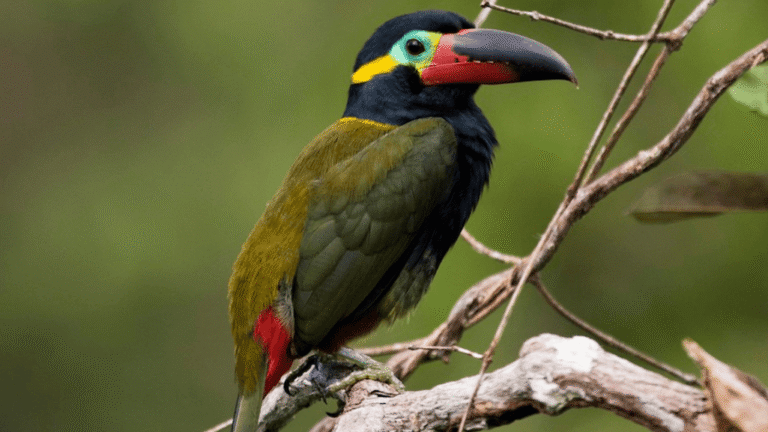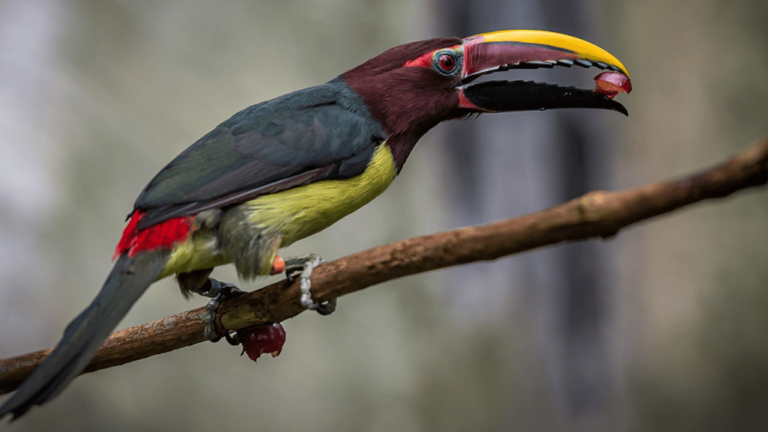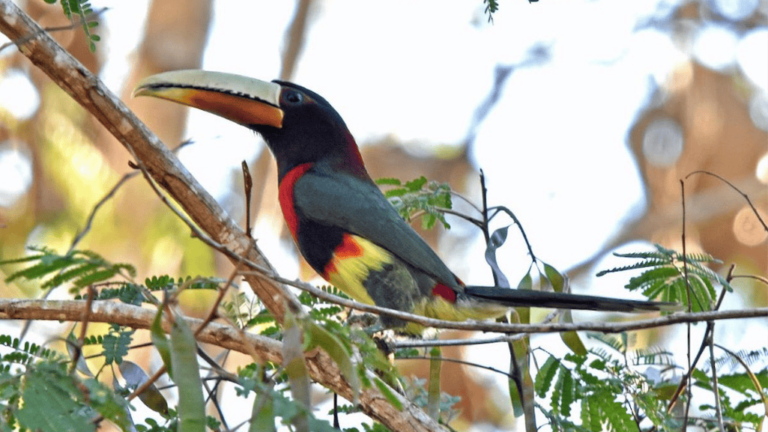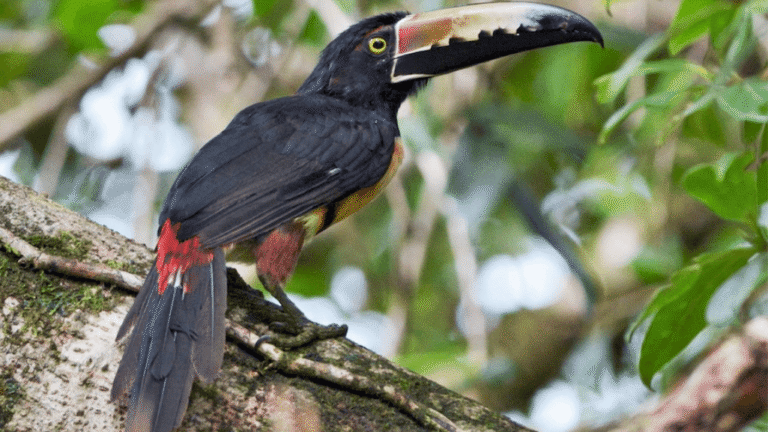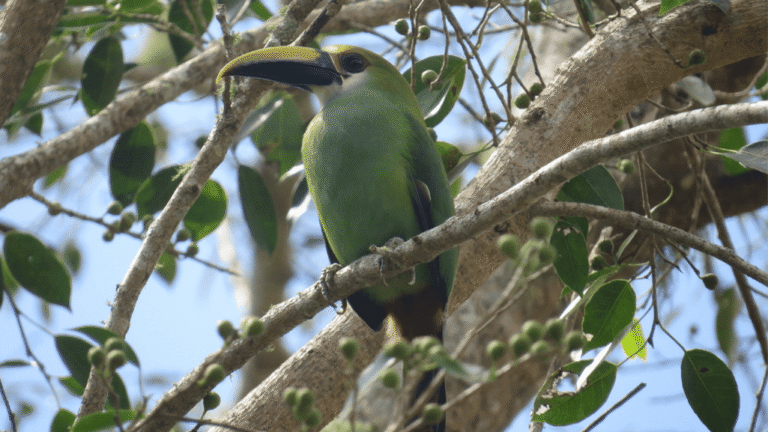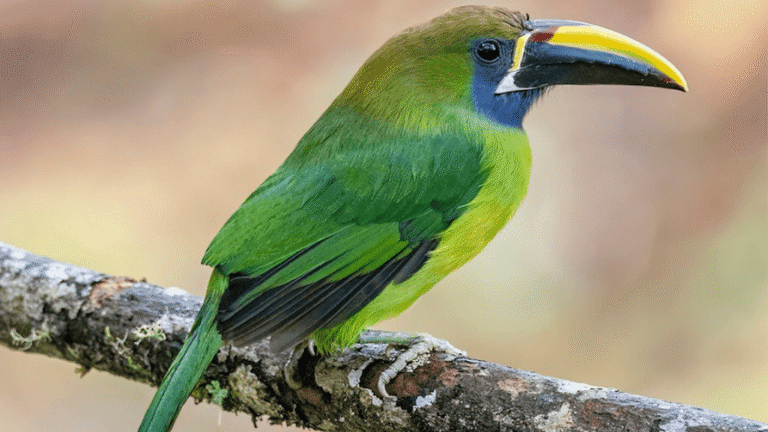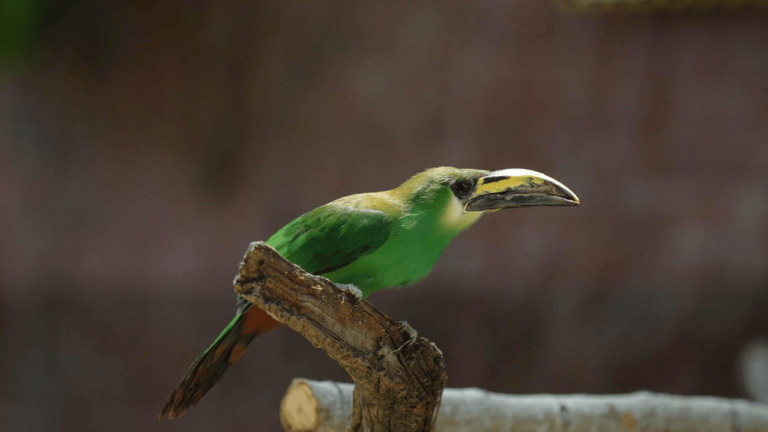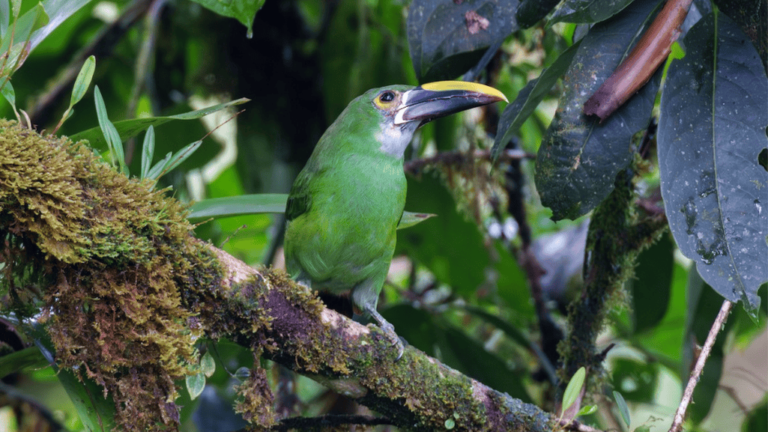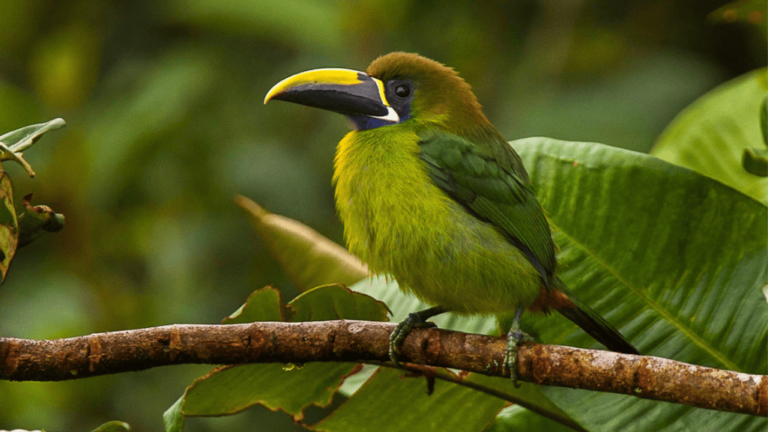If you’re a fan of tropical birds and colorful wildlife, then you’re in for a treat. Get ready to embark on a journey to the rainforests of South America, where you’ll encounter the fascinating Cuvier Toucan. This magnificent creature is known for its vibrant beak and is a favorite subject for wildlife photography and birdwatching enthusiasts. Join us as we dive into the habitat, behavior, and conservation of this remarkable toucan.
Key Takeaways:
- Cuvier’s Toucan is a tropical bird found in the rainforests of South America.
- Its colorful beak makes it easily recognizable and a popular subject for wildlife photography.
- Birdwatchers flock to South America to catch a glimpse of this stunning rainforest bird.
- Habitat loss and hunting pose challenges to the long-term survival of Cuvier’s Toucan.
- Conservation efforts are crucial to protect the biodiversity of the region and its unique species.
Taxonomy and Classification of Cuvier’s Toucan
The Cuvier’s Toucan, scientifically known as Ramphastos tucanus, is a remarkable bird species found in the rainforests of South America. Belonging to the family Ramphastidae, this toucan is easily recognized by its large, colorful beak. Let’s delve into the taxonomic classification of the Cuvier’s Toucan and learn more about this unique bird.
| Kingdom | Phylum | Class | Order | Family | Genus | Species |
|---|---|---|---|---|---|---|
| Animalia | Chordata | Aves | Piciformes | Ramphastidae | Ramphastos | Ramphastos tucanus |
The Cuvier’s Toucan is classified under the animal kingdom (Animalia), phylum Chordata, and class Aves, which encompasses all bird species. It belongs to the order Piciformes and the family Ramphastidae, which consists of toucans and related birds. The genus of the Cuvier’s Toucan is Ramphastos, and its species name is Ramphastos tucanus.
The taxonomic classification provides a comprehensive framework for understanding the Cuvier’s Toucan’s relationships with other bird species and highlights its unique characteristics within the avian world.
Distribution and Habitat of Cuvier Toucan
The Cuvier’s Toucan is primarily found in the rainforests of South America, particularly in countries like Brazil, Bolivia, Venezuela, and Guyana. Its distribution spans across the lush tropical habitats of these regions, where the bird thrives amidst the dense foliage and abundant biodiversity. The toucan’s habitat preference aligns with the tropical humid forests, which provide the ideal conditions for its survival and reproduction.
Cuvier’s Toucan can be spotted in the upper canopy of the rainforest, where it navigates skillfully among the treetops. Its ability to adapt and thrive in this complex and challenging environment is a testament to its remarkable evolutionary traits. Not only does the toucan find ample food sources and nesting opportunities in the rainforest canopy, but it also benefits from the protection and camouflage provided by the dense foliage.
The toucan’s habitat preference and distribution in the South American rainforests make it an invaluable species to the region’s ecosystem. By dispersing seeds and participating in pollination, the Cuvier’s Toucan plays a crucial role in maintaining the delicate balance and diversity of plant life in the rainforest. Understanding its distribution and habitat is vital for conservation efforts and ensuring the long-term survival of this beautiful and captivating bird.
| Country | Distribution |
|---|---|
| Brazil | Throughout the Amazon rainforest, including the states of Amazonas, Acre, and Pará. |
| Bolivia | Found in the Madidi National Park, Noel Kempff Mercado National Park, and other protected areas. |
| Venezuela | Occurs in the dense rainforests of the Amazonas, Bolívar, and Apure states. |
| Guyana | Can be observed in the rainforests of the Rupununi region and Kaieteur National Park. |
Behavior and Feeding Habits of Cuvier Toucan
The Cuvier’s Toucan is known for its fascinating behavior and diverse feeding habits. This iconic bird exhibits social behavior and can often be seen in small flocks or pairs in the rainforest canopy, creating a lively and vibrant atmosphere in the treetops of South America.
As a fruit-eater, the Cuvier’s Toucan plays a crucial role in seed dispersal within its ecosystem. It feeds on various fruits found in the rainforest, utilizing its large beak to reach for and consume a variety of delicious and nutritious treats. The toucan’s beak is specifically designed to grasp and manipulate fruits, providing it with a distinct advantage in the rainforest canopy.
In addition to fruit, the Cuvier’s Toucan has a diverse diet that includes insects, lizards, eggs, and even small birds. This omnivorous behavior allows the toucan to adapt to the ever-changing availability of food sources in its habitat. By consuming a wide range of prey, the toucan ensures its survival and contributes to the balance of the rainforest ecosystem.
Feeding Habits of the Cuvier’s Toucan:
- Primary diet: Fruit
- Secondary diet: Insects, lizards, eggs, and small birds
- Contribution to seed dispersal in the rainforest
The Cuvier’s Toucan’s unique feeding habits make it an integral part of the rainforest ecosystem. Its fruit-eating behavior and ability to consume a variety of prey demonstrate the adaptability and resourcefulness of this remarkable bird.
***Insert visually appealing and relevant image of Cuvier’s Toucan here***
| Behavior and Feeding Habits of Cuvier’s Toucan | Description |
|---|---|
| Social Behavior | Cuvier’s Toucan exhibits social behavior and can often be seen in small flocks or pairs in the rainforest canopy. |
| Fruit-Eater | The toucan’s large beak enables it to reach and consume a variety of fruits found in the rainforest canopy. |
| Omnivorous Diet | In addition to fruit, the toucan feeds on insects, lizards, eggs, and small birds to ensure its survival and contribute to the rainforest ecosystem. |
Reproduction and Nesting of Cuvier Toucan
Cuvier’s Toucan follows a monogamous mating system during the breeding season. This period is marked by courtship rituals and the formation of pairs, ensuring successful reproduction.
Courtship:
During courtship, male and female Cuvier’s Toucans engage in various behaviors to establish their bond. They display their vibrant plumage, utilize unique vocalizations, and engage in bill-clattering to communicate and attract a mate.
Nesting:
Once courtship is successful, the female toucan lays 2-4 white eggs in a high tree cavity. These cavities can either be natural holes or ones created by woodpeckers. The nest provides protection from predators and the elements.
Both parents take turns incubating the eggs, ensuring they remain warm and protected. Incubation typically lasts for about 14-15 days, during which the parents diligently care for the nest and eggs.
Fledging:
After the incubation period, the eggs hatch, giving birth to adorable toucan chicks. The offspring remain in the nest for several weeks, growing and developing under the watchful eyes of their parents.
Once the chicks are ready, they fledge the nest and begin their independent journey in the rainforest. This is a crucial step in their development, as they learn to navigate their surroundings and acquire essential survival skills.
Image:
| Aspect | Description |
|---|---|
| Monogamous Mating System | Cuvier’s Toucans form monogamous pairs during the breeding season. |
| Nest | The female toucan lays 2-4 white eggs in a high tree cavity, either natural or created by a woodpecker. |
| Incubation | Both parents take turns incubating the eggs for approximately 14-15 days. |
| Fledging | The chicks remain in the nest for several weeks before fledging and embarking on an independent life. |
Conservation Status and Threats to Cuvier Toucan
Cuvier’s Toucan, scientifically known as Ramphastos tucanus, is classified as a species of “Least Concern” on the IUCN Red List. However, despite this status, the toucan faces significant threats to its population due to habitat loss and hunting.
Habitat loss, primarily caused by deforestation in the Amazon basin, poses a severe challenge to the Cuvier’s Toucan. The destruction of its natural habitat disrupts the bird’s ability to find suitable nesting sites and sources of food. As the rainforests are cleared for agricultural purposes and urbanization, the toucans lose their homes, leading to a decline in their numbers.
Additionally, hunting is another major threat to the Cuvier’s Toucan. These beautiful birds are sometimes targeted for the pet trade or hunted for their meat. The illegal capture and trade of toucans not only disrupt their natural populations but also contribute to their decline in the wild.
| Threats to Cuvier’s Toucan | Conservation Actions |
|---|---|
| Habitat Loss due to deforestation in the Amazon basin | Supporting rainforest conservation initiatives |
| Hunting for the pet trade and as a source of food | Enforcing wildlife protection laws and promoting awareness |
Efforts are being made to conserve the Cuvier’s Toucan and protect its natural habitat. Several organizations, governments, and environmentalists are working together to raise awareness about the importance of preserving the rainforests and the diverse wildlife that inhabit them. By supporting conservation initiatives and enforcing wildlife protection laws, we can contribute to the long-term survival of the Cuvier’s Toucan and safeguard the biodiversity of the region.
Conclusion
In summary, the Cuvier’s Toucan is a captivating bird species that inhabits the lush rainforests of South America. With its vibrant beak and unique characteristics, it has become a favorite subject for birdwatchers and photographers alike. However, the conservation of this beautiful species is of utmost importance.
The Cuvier’s Toucan faces significant threats due to habitat loss and hunting. Deforestation in the Amazon basin, where these toucans reside, poses a grave concern as it destroys their natural habitat. Additionally, the illegal pet trade and hunting practices further endanger their population.
To ensure the long-term survival of the Cuvier’s Toucan and the preservation of biodiversity in the region, habitat conservation efforts are crucial. Raising awareness about the importance of protecting rainforest ecosystems and implementing measures to curb illegal activities are necessary steps towards safeguarding this species.
By working together to conserve the habitats of the Cuvier’s Toucan, we can contribute to the overall preservation of biodiversity in the rainforests of South America. The Cuvier’s Toucan holds a significant place in the intricate web of life, and it is our responsibility to protect and cherish these magnificent birds for future generations.
FAQ
What is a Cuvier’s Toucan?
Cuvier’s Toucan is a colorful tropical bird found in the rainforests of South America. It is known for its vibrant beak and is a popular subject for wildlife photography and birdwatching.
What is the scientific name of Cuvier’s Toucan?
Cuvier’s Toucan is scientifically known as Ramphastos tucanus and belongs to the family Ramphastidae.
Where is Cuvier’s Toucan found?
Cuvier’s Toucan is primarily found in the rainforests of South America, including countries like Brazil, Bolivia, Venezuela, and Guyana.
What is the habitat of Cuvier Toucan?
Cuvier’s Toucan prefers tropical humid forests and can be found in the canopy of trees, making it well-adapted to living in the dense rainforest habitat.
What is the behavior and feeding habits of Cuvier Toucan?
Cuvier’s Toucan exhibits social behavior and can often be seen in small flocks or pairs in the rainforest canopy. It is primarily a fruit-eater but also feeds on insects, lizards, eggs, and small birds.
How does Cuvier Toucan reproduce and nest?
Cuvier’s Toucan forms monogamous pairs during the breeding season. The female toucan lays 2-4 white eggs in a high tree cavity, either in a natural hole or one created by a woodpecker. Both parents take turns incubating the eggs for about 14-15 days, and the chicks remain in the nest for several weeks before fledging.
What is the conservation status of Cuvier Toucan?
Cuvier’s Toucan is classified as a species of “Least Concern” on the IUCN Red List. However, habitat loss and hunting pose significant threats to its population.
What are the threats to Cuvier Toucan?
Deforestation in the Amazon basin, where the toucan resides, is a major concern as it destroys the bird’s natural habitat. Additionally, toucans are sometimes hunted for the pet trade or as a source of food.

